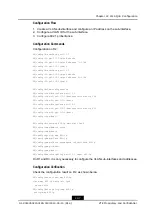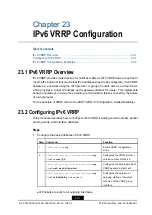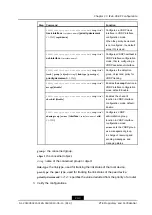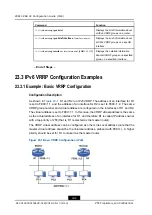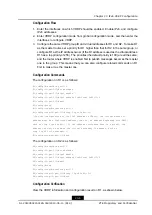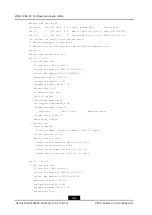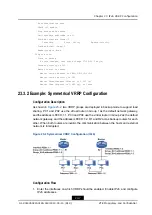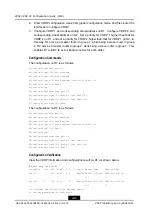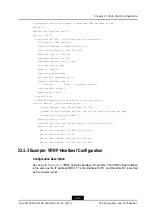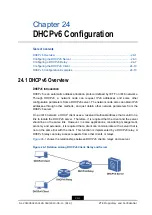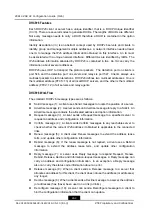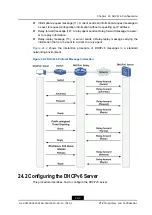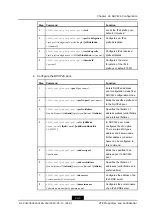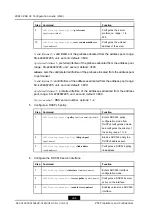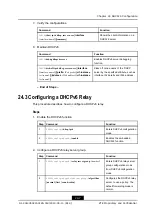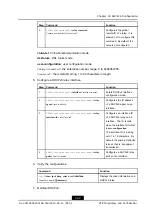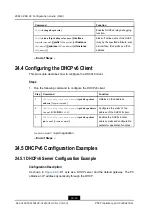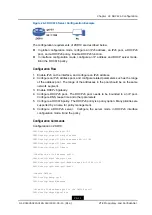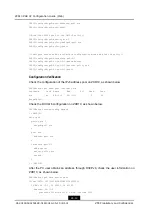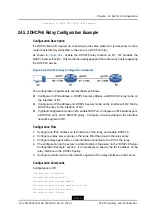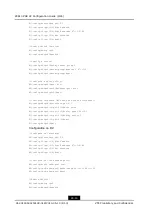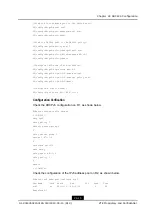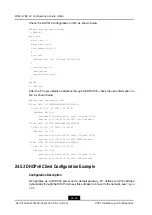
Chapter 24
DHCPv6 Configuration
Table of Contents
24.1 DHCPv6 Overview
DHCPv6 Introduction
DHCPv6 is an automatic address allocation protocol defined by IETF on IPv6 networks.
Through DHCPv6, a network node can request IPv6 addresses and some other
configuration parameters from a DHCPv6 server. The network node also can obtain IPv6
addresses through other methods, and just obtain other network parameters from the
DHCPv6 server.
On an IPv6 network, a DHCP client uses a reserved multicast address that is valid on a
link to locate the DHCPv6 server. Therefore, it is required that the client and the server
should be on the same link. However, in some applications, considering management,
economy and extension, it is required that a client can communicate with a server that is
not on the same link with the client. This function is implemented by a DHCPv6 relay. A
DHCPv6 relay can relay access requests from other clients or relays.
shows the relationships between DHCPv6 clients, relays and a server.
Figure 24-1 Relation Among DHCPv6 Client, Relay and Server
24-1
SJ-20140504150128-018|2014-05-10 (R1.0)
ZTE Proprietary and Confidential

